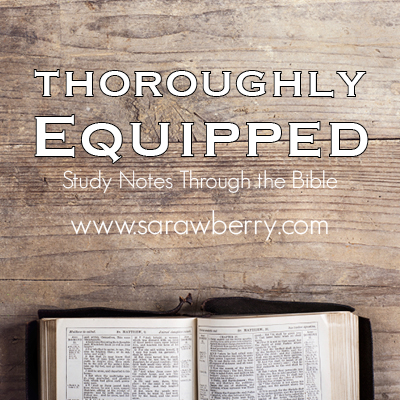Today’s reading includes Leviticus 6:1-7:27, Mark 3:7-30, Psalm 37:1-11, Proverbs 10:3-4.
Today’s reading describes the different types of offerings the priests were required to make. Reading through all the details of each made me thankful, once again, that I am living by the New Covenant, rather than by the Old Covenant. But as always, the Old Testament is Jesus concealed and the New Testament is Jesus revealed. When we study the Old Testament, we can find Jesus over and over. The New Testament message is so much richer when we see how Jesus fulfilled the law for us. These were the offerings mentioned in today’s reading–for the next couple of days, we will look at each one of these and their symbolism: The Burnt offering, the Grain offering, the Sin offering, The Guilt offering, and the Peace offering.
The Burnt offering, the Sin offering, and the Guilt offering all required shedding of blood. The Grain offering and the Peace offering all required the burning and baking of holy ingredients. The Burnt offering was also that of dedicating something to the Lord. It was first seen in the story of Noah:
20 Then Noah built an altar to the Lord, and there he sacrificed as burnt offerings the animals and birds that had been approved for that purpose.21 And the Lord was pleased with the aroma of the sacrifice and said to himself, “I will never again curse the ground because of the human race, even though everything they think or imagine is bent toward evil from childhood. I will never again destroy all living things. 22 As long as the earth remains, there will be planting and harvest, cold and heat, summer and winter, day and night.”
We also see the burnt offering in the story of Abraham. We have already studied about Abraham being asked to sacrifice Isaac and we know that this was a preview of the fact that God the Father was going to sacrifice His only Son. But I had not noticed that it was a burnt offering which God asked of Abraham. This is what The Holman Concise Bible Commentary had to say about this:
Within a few years the Lord tested Abraham by commanding him to offer his covenant son as a burnt offering. The intent was to teach Abraham that covenant blessing requires total covenant commitment and obedience. The narrative also stresses that covenant obedience brings fresh bestowal of covenant blessings. Abraham’s willingness to surrender his son guaranteed all the more the fulfillment of God’s promises to him.
The Hebrew word for “burnt offering” is pronounced “olah” means to “ascend,“ or literally to “go up in smoke.” The smoke from the sacrifice ascended to God, and was “a special gift, a pleasing aroma to the Lord” (Leviticus 1:9). The Hebrew synomyn for “burnt offering” also meant “complete” and the burnt offering was the complete destruction of the animal in an effort for sinful man to reach the holy God. The animal sacrificed was to be a male with no defects. Leviticus 6:8-13 describes the traditional burnt offering.
8 The Lord spoke to Moses, saying, 9 “Command Aaron and his sons, saying, This is the law of the burnt offering. The burnt offering shall be on the hearth on the altar all night until the morning, and the fire of the altar shall be kept burning on it. 10 And the priest shall put on his linen garment and put his linen undergarment on his body, and he shall take up the ashes to which the fire has reduced the burnt offering on the altar and put them beside the altar. 11 Then he shall take off his garments and put on other garments and carry the ashes outside the camp to a clean place. 12 The fire on the altar shall be kept burning on it; it shall not go out. The priest shall burn wood on it every morning, and he shall arrange the burnt offering on it and shall burn on it the fat of the peace offerings. 13 Fire shall be kept burning on the altar continually; it shall not go out.
A person could give a burnt offering at any time, although there were specific times it was required:
Every morning and evening (Exodus 29:38-42; Numbers 28:2)
Each Sabbath (Numbers 28:9-10)
The beginning of each month (Numbers 28:11)
At Passover (Numbers 28:19)
With the new grain/firstfruits offering at the Feast of Weeks (Numbers 28:27)
At the Feast of Trumpets/Rosh Hashanah (Numbers 29:1)
At the new moon (Numbers 29:6)
The Burnt offering was a sacrifice of atonement. It was an acknowledgement of sin and an effort to renew relationship with the most holy God. The animal was completely consumed by the fire. The ultimate fulfillment of the burnt offering is in Jesus’ sacrifice on the cross. His body was completely consumed, and He ascended to God, just as the word “burnt offering” means. But most importantly, His body as a sacrifice was the “one and done” atonement for our sins thereby securing our relationship with God.


